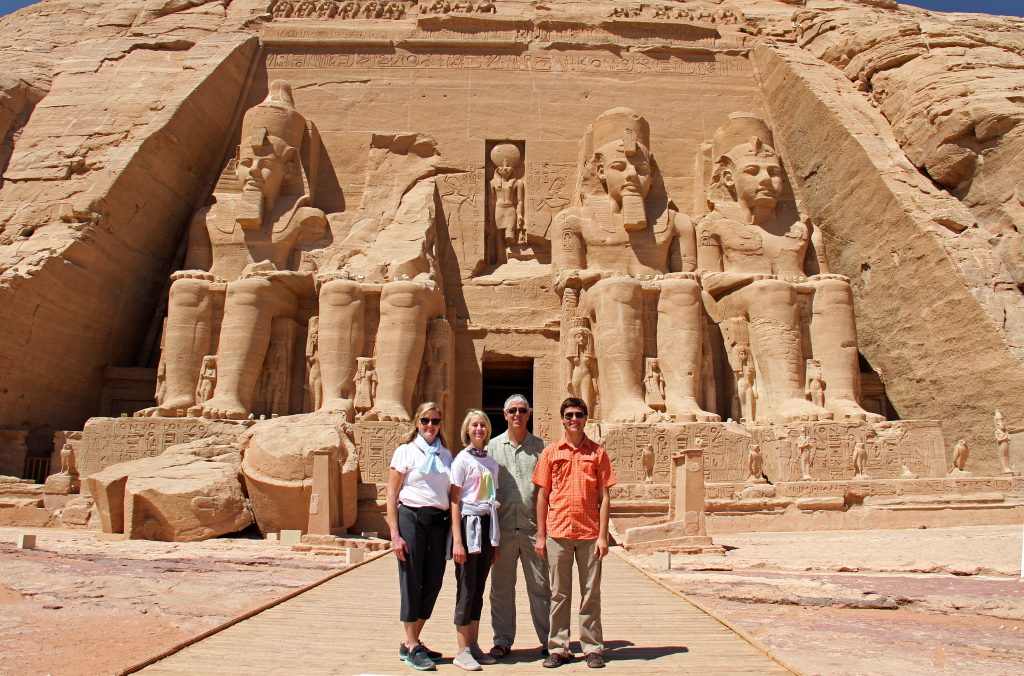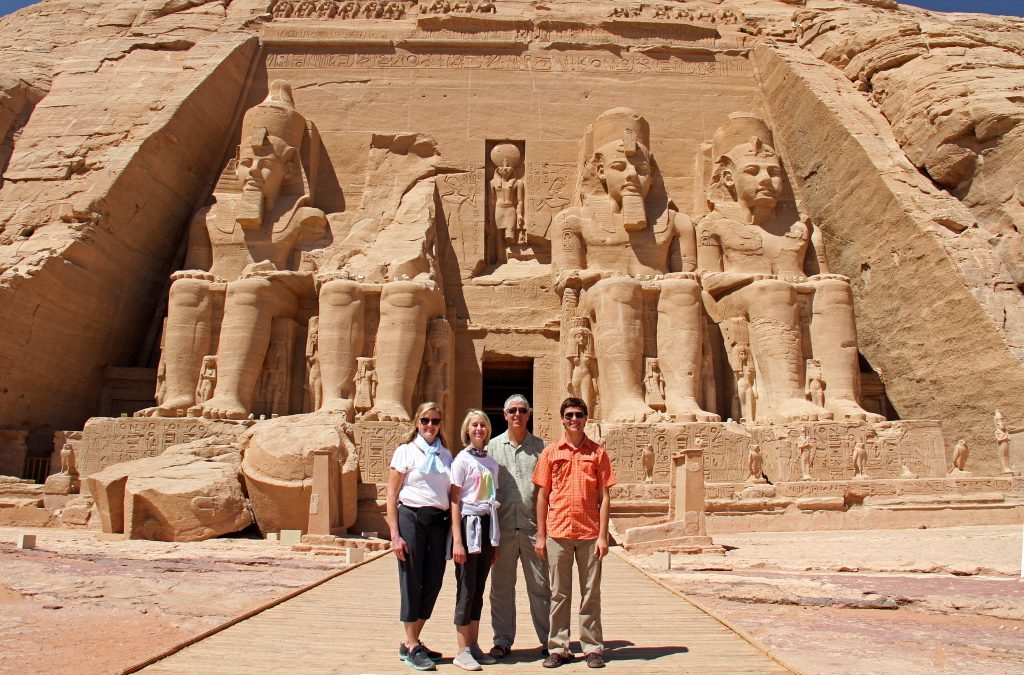After only a day in Cairo, we flew to Aswan to start our exploration of Upper Egypt. Around Aswan, we visited the Aswan High Dam, and later the Aswan Dam where we took a boat out to see the Temple of Philae which was moved from its original location where it was partially submerged after the Aswan Dam was built. We enjoyed an excellent Nubian lunch at a small restaurant on a nearby island with the Temple serving as a beautiful backdrop a short distance across the water. We also visited the red granite quarry where the unfinished obelisk lies. When last we visited, the quarry seemed quite remote. Now, a growing Aswan surrounds it, complete with a formal entrance, chain-lined path, and barriers to keep you off of the obelisk.
Early the next morning we were up before the sun, driving 3 hours south across the desert to the furthest reaches of Egypt to see one of the most spectacular temples built for Ramses II–Abu Simbel. Rescued from the rising waters of Lake Nasser, Abu Simbel was also relocated by a massive UNESCO effort in the 1960s. Originally carved into a sandstone cliff, the temple was cut into pieces and reassembled higher on the plateau. Abu Simbel is quite remote (only 90 km from the Sudanese border), but well worth the visit. In addition to its ancient beauty, massive scale, and intricate workmanship, it is also a marvel of modern engineering to relocate and rebuild such a massive monument.

Abu Simbel–one of the most spectacular temples in Egypt

